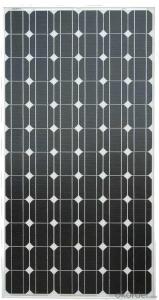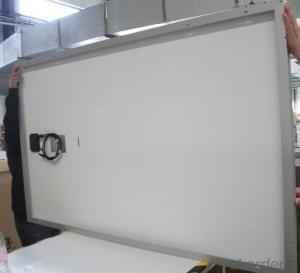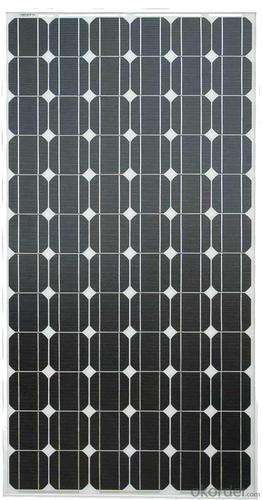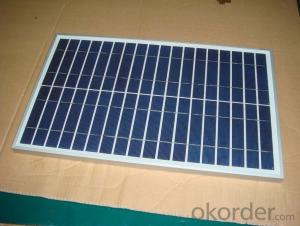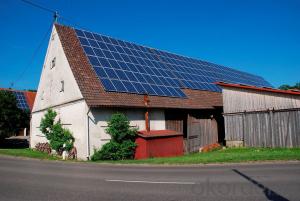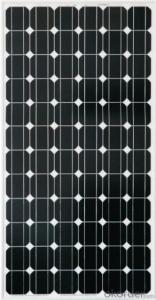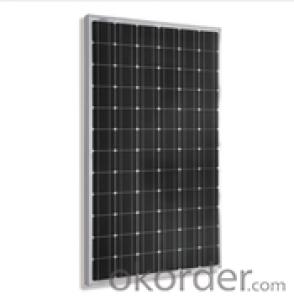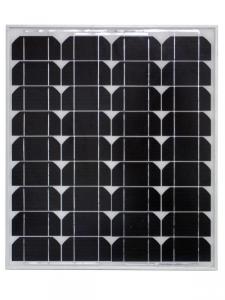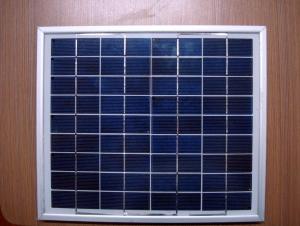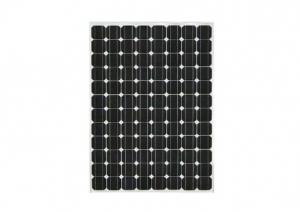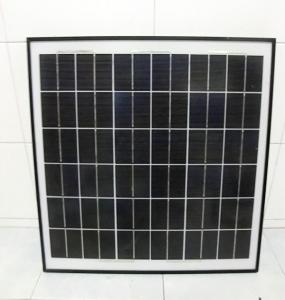Sunrise Solar Panels - 200W Monocrystalline Solar Panels
- Loading Port:
- Shekou
- Payment Terms:
- TT or LC
- Min Order Qty:
- 10 watt
- Supply Capability:
- 300000 watt/month
OKorder Service Pledge
OKorder Financial Service
You Might Also Like
Solar Monocrystalline Series Panels
Introduction of Solar Monocrystalline Series Panels
CNBM Solar photovoltaic (PV) Panel is designed for large electrical power requirements. It is the optimal choice for both on-grid and off-grid power systems. CNBM Solar panel offers high performance of power per square foot of solar array. Monocrystalline silicon(c-Si): often made using the Czochralski process. Single-crystal wafer cells tend to be expensive, and because they are cut from cylindrical ingots, do not completely cover a square solar cell module without a substantial waste of refined silicon. Hence most c-Si panels have uncovered gaps at the four corners of the cells.
Characteristics of Solar Monocrystalline Series Panels
I Solar Cell : High efficiency crystalline solar cell. Even if under the weak light, the solar module can produce maximum power output.
II Tempered glass (toughened glass): Anti-reflecting coating and high transmission rate glass increase the power output and mechanical strength of solar module.
III Resisting moisture and etching effectively, not effected by geology.
Standard Test Conditions of Solar Monocrystalline Series Panels
The opto-electrical specifications shown below are stabilized values being measured at Standard Test Conditions, Irradiance: 1000W/m2, Spectrum: AM1.5 at 25°C, The info below is subject to manufacturing tolerances. Where appropriate minutes of measurement are available and are used for the dimensioning of the installation.
Advantages of Solar Monocrystalline Series Panels
• CNBM Solar performance guarantees for 25 years
• Timeliness of delivery
CNBM International Corporation's products including Monocrystalline Solar Panel, Polycrystalline Solar Panel have received and enjoyed famous reputation in many countries and regions in the world .As a solar panel supplier in
Temperature Coefficient of Cells
NOCT | 47℃±2℃ |
Temperature Coefficients of Isc (%/℃) | 0.064 |
Temperature Coefficients of Voc (%/℃) | -0.33 |
Temperature Coefficients of Pmp (%/℃) | -0.45 |

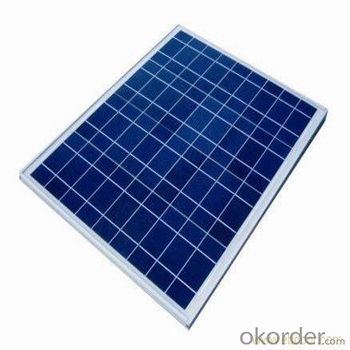
FAQ:
1. Can you tell me the parameter of your solar panels?
We have different series of cells with different power output, both from c-si to a-si. Please take our specification sheet for your reference.
2. How do you pack your products?
We have rich experience on how to pack the panels to make sure the safety on shipment when it arrives at the destination.
3. Can you do DDU for us?
Of course,we can do it for you
- Q: Can solar panels be installed on mining or extraction sites?
- Yes, solar panels can be installed on mining or extraction sites. They provide a sustainable and renewable source of energy, reduce carbon emissions, and can offset the energy demands of these operations. Additionally, solar panels can help reduce operating costs and dependence on fossil fuels. However, specific feasibility studies and considerations are necessary to assess the site's conditions, energy requirements, and potential environmental impacts.
- Q: Can solar panels be installed on factories or industrial buildings?
- Yes, solar panels can be installed on factories or industrial buildings. In fact, many industrial companies are increasingly installing solar panels on their roofs or open spaces to generate clean and renewable energy. This helps to reduce their dependence on fossil fuels, lower their energy costs, and contribute to a more sustainable and environmentally-friendly operation.
- Q: What is the warranty on solar panels?
- The warranty on solar panels can vary depending on the manufacturer and the specific product, but it typically ranges from 10 to 25 years.
- Q: How can I know the right type of solar panel to choose for my small village house in Africa?
- The power output of a solar panel uses a formula to determine kilowatts produced per hour per square meter per day. This calculation is important because, if you plan to install a solar power system for your home, you will want to know how many solar panels will be needed. To calculate solar power requirements correctly, you need to gather the data that is needed for the calculation. First you have to find the average amount of solar radiation available for your area. You can use a solar radiation chart. This can range from a 4 to a 7 depending on the area you live in. Write the number down on a piece of paper and indicate it with the letters RA. Next is determine the amount of electricity that you use daily. Add the kilowatt-hours used per month from your utility bill. Multiply this number by ,000 to get the watt hours in a month. Divide the total by 30 for the amount of electricity you use daily. Write this number down and indicate it with the letters DE. Determine the percentage of your home that you want to power with the solar power system. Write this number down and indicate it with the letter P. Determine the system inefficiency factor for the solar power system. You should be able to find this on the brochure for the system or from the manufacturer's web site. Write this number down and indicate it by the letter I. Determine the power or yield that is required for your home. Use the equation P = I x (DE x P) / RA to find the power requirements in kWh. Divide the number from Step 5 by the peak wattage for a single solar panel to determine the number of panels you will need for your home. Goodluck! :)
- Q: Was at home depot today and a Solar City sales man came up to me, offering me free solar panels. He said he could install them on my garage for free, free installation, free panels. Promised me it wouldn't cost me a dime. This is obviously appealing to someone like me who has a $200.00 monthly electrical bill. Now my question is this. Is this a scam? Are there ANY hidden fees or things I should be weary of?- I understand I may not save tons of money, but if I can save even something as low as $20 a month I would be happy. I live in a sunny area and they seem very interested in my garage roof. Any information would be super-helpful, thank you.
- Danny, okorder
- Q: Can solar panels be used in areas with limited access to electricity?
- Yes, solar panels can be used in areas with limited access to electricity. This is because solar panels generate electricity using sunlight, so as long as there is sunlight available, they can generate power. In fact, solar panels are often used as a sustainable and reliable source of electricity in remote or off-grid locations where traditional power infrastructure is not available or feasible.
- Q: Can solar panels be installed on a university or college campus?
- Yes, solar panels can be installed on a university or college campus. In fact, many educational institutions have already embraced solar energy as a way to reduce their carbon footprint and promote sustainability. Installing solar panels on campus buildings can provide clean, renewable energy, reduce electricity costs, and serve as an educational tool for students to learn about renewable energy technologies.
- Q: Can solar panels be used for powering wireless charging stations?
- Yes, solar panels can be used to power wireless charging stations. Solar panels convert sunlight into electricity, which can be used to charge devices wirelessly through induction or magnetic resonance. By harnessing solar energy, wireless charging stations can operate independently and sustainably, making them an environmentally friendly option.
- Q: hi everyone..i wanna do my major project on solar panels...so anyone kindly tell me the projects based on solar panels..
- I have done this in my project too and a solar panel, two wires, a circuit/project board, an LED light/a small fan,a switch and a solderer. Just solder the wires to the positive and negative parts of the panel, put the wires connected to the panel to the board put the LED's on the other side and the switch together with it shine light on the panel and the light/fan will work.(If it dosen't work, please DO NOT consult ME.)
- Q: How much Electricity does a standard Solar panel producein terms of Watts and in terms of Units( i.e. electricity meter attached in our House)If I have 20 Solar panels and an inverter , how much electricity will I Be able to harness and store (state that in terms of volts)Can I run Arefridgerator, Iron, Heaters, Plasma T.V. and other high Electricity Consuming Devices.
- Take a look on OKorder at some of the books on how to design solar energy systems. It is a bit more complicated than you might expect. I'm not sure what you consider to be a standard solar panel, but the 3' ones I have produce about 5 watts of power in full sunlight. Put simply, you need to convert the power from the solar cells (variable voltage) into a constant voltage usable for charging a batteries. Most of the low cost modules for this purpose can't handle more than about 00 watts. Larger systems are available that handle thousands of watts but they are quite pricey. Since you can't take out more than you put into your battery system, you can calculate about how long you can run a high-current appliance based upon its wattage rating, that of the battery system (adjusted for loss of converting to AC), and the charging system.
Send your message to us
Sunrise Solar Panels - 200W Monocrystalline Solar Panels
- Loading Port:
- Shekou
- Payment Terms:
- TT or LC
- Min Order Qty:
- 10 watt
- Supply Capability:
- 300000 watt/month
OKorder Service Pledge
OKorder Financial Service
Similar products
Hot products
Hot Searches
Related keywords
